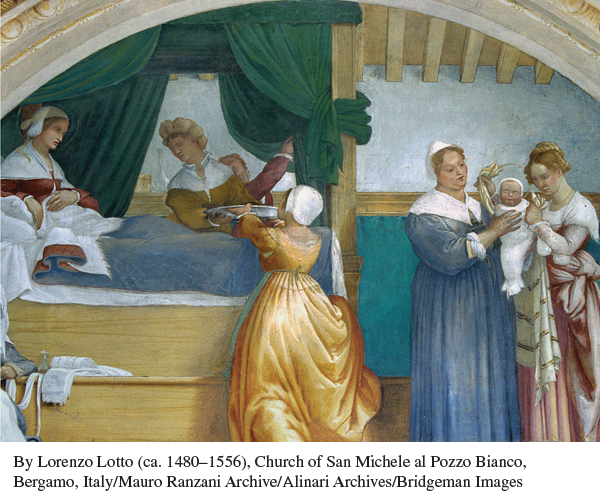A History of Western Society: Printed Page 356
A History of Western Society, Value Edition: Printed Page 342
A History of Western Society, Concise Edition: Printed Page 357
Introduction for Chapter 12
12
European Society in the Age of the Renaissance
1350–1550
While the Hundred Years’ War gripped northern Europe, a new culture emerged in southern Europe. The fourteenth century witnessed remarkable changes in Italian intellectual, artistic, and cultural life. Artists and writers thought that they were living in a new golden age, but not until the sixteenth century was this change given the label we use today — the Renaissance, derived from the French word for “rebirth.” That word was first used by art historian Giorgio Vasari (1511–1574) to describe the art of “rare men of genius” such as his contemporary Michelangelo. Through their works, Vasari judged, the glory of the classical past had been reborn after centuries of darkness. Over time, the word’s meaning was broadened to include many aspects of life during that period. The new attitude had a slow diffusion out of Italy, so that the Renaissance “happened” at different times in different parts of Europe. The Renaissance was a movement, not a time period.
Later scholars increasingly saw the cultural and political changes of the Renaissance, along with the religious changes of the Reformation (see Chapter 13) and the European voyages of exploration (see Chapter 14), as ushering in the “modern” world. Some historians view the Renaissance as a bridge between the medieval and modern eras because it corresponded chronologically with the late medieval period and because there were many continuities with that period along with the changes that suggested aspects of the modern world. Others have questioned whether the word Renaissance should be used at all to describe an era in which many social groups saw decline rather than advance. The debates remind us that these labels — medieval, Renaissance, modern — are intellectual constructs devised after the fact, and all contain value judgments.▪

CHAPTER PREVIEW
How did politics and economics shape the Renaissance?
What new ideas were associated with the Renaissance?
How did art reflect new Renaissance ideals?
What were the key social hierarchies in Renaissance Europe?
How did nation-
Chronology
| ca. 1350 | Petrarch develops ideas of humanism |
| 1434–1737 | Medici family in power in Florence |
| 1440s | Invention of movable metal type |
| 1447–1535 | Sforza family in power in Milan |
| 1455–1471 | Wars of the Roses in England |
| 1469 | Marriage of Isabella of Castile and Ferdinand of Aragon |
| 1477 | Louis XI conquers Burgundy |
| 1478 | Establishment of the Inquisition in Spain |
| 1492 | Spain conquers Granada, ending reconquista; practicing Jews expelled from Spain |
| 1494 | Invasion of Italy by Charles VIII of France |
| 1508–1512 | Michelangelo paints ceiling of Sistine Chapel |
| 1513 | Machiavelli writes The Prince |
| 1563 | Establishment of first formal academy for artistic training in Florence |